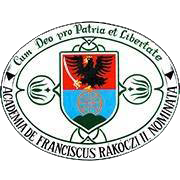Please use this identifier to cite or link to this item:
https://dspace.kmf.uz.ua/jspui/handle/123456789/3298| Title: | Вино і бограч, або присутність мов у лінгвістичному ландшафті Закарпатських гастрофестивалів |
| Other Titles: | Wine and bograch, or the appearance of languages in the linguistic landscape of Transcarpathian gastronomic festivals |
| Authors: | Кормочі Золтан Karmacsi Zoltán Шаш Еники Sass Enikő |
| Keywords: | Закарпаття;гастрофестиваль;мовний ландшафт;білінгвізм |
| Issue Date: | 2022 |
| Publisher: | Черкаський національний університет імені Богдана Хмельницького |
| Type: | dc.type.researchStudy |
| Citation: | In Мовознавчий вісник. Збірник наукових праць. 2022. Випуск 33. c. 69-84. |
| Series/Report no.: | ;Випуск 33. |
| Abstract: | Резюме. На Закарпатті поряд із природними, історичними та культурними пам’ятками все більша кількість місць пропонує туристам організовані програми.Серед фестивалів краю перше місце посідають фестивалі народних промислів та фольклорні фестивалі, а друге –гастрономічні або кулінарні.Гастрономічні фестивалі(особливо фестивалі вина) завойовують позиції у фестивальному туризмі Закарпаття та приваблюють до нашого краю велику кількість туристів.Мета статті –окреслити мовний ландшафт закарпатських гастрофестивалів, які наразі перебувають на другому місці за популярністю, зокрема, докладніше проаналізувати в цьому контексті два фестивалі, які проходять у населених пунктах із компактним проживанням угорського населення: Міжнародний фестиваль різників у с.Геча та Міжнародний фестиваль вина у м.Берегове. Огляд зроблено на підставі спостережень учасників, новинного контенту те реклами, які з’являлися в онлайн-та офлайн-просторі, переважнопро фестивалі, які проходили у2018–2019-му роках, адже через епідемію коронавірусу аж до весни2022 року більшість таких заходів були скасовані.У лінгвістичному ландшафті закарпатських фестивалів та фестивальних заходів спостережено домінування державної української мови.Поруч із нею тільки епізодично з’являються мови нацменшин, що проживають на Закарпатті, і зовсім рідко (або взагалі відсутні) інші іноземні мови (наприклад англійська), що представлені хіба що на рівні окремих лексем чи синтагм. Для символічного мовного простору фестивалів у населених пунктах із компактним проживанням угорського населення характерне незначне домінування двомовних написів та української мови.Частка наявності певної мови залежить і від того, яка цільова аудиторія фестивалю та які потреби він має на меті задовольнити. Також важливим аспектом є і те, у якій частині Закарпаття (із погляду проживання конкретної нацменшини) проводять цей захід. З’ясовано, що на фестивалях місцевого значення в населених пунктах, де компактно проживають угорці, або домінує угорська мова, або переважає двомовність.Натомість фестивалі, що мають більший успіх серед туристів,як, наприклад, Міжнародний фестиваль різників у с.Геча або Міжнародний фестиваль вина в м.Берегове,демонструють двомовність тільки на «головних фасадах», а в символічному просторі території фестивалів домінує мова більшості. Аbstract. In addition to natural, historical and cultural attractions, more and more places in Transcarpathia offer organised programmes for tourists. The region's festivals are dominated by folk art and folklore festivals, with gastronomy festivals in second place. Gastronomic festivals (especially wine festivals) are gaining ground in the festival tourism of Transcarpathia and attract a significant number of domestic visitors.Purpose.The present study attempts to map the linguistic landscape of the emerging gastronomic festivals in Transcarpathia, with a detailed focus on the two best-known festivals organised in the Hungarian settlements (International Butcher Competition of Hecha, InternationalWine Festival of Berehove). The festivals are presented mainly on the basis of participant observations made in 2018–2019, as well as news and information published on online platforms and news portals, because most festivals have been canceled until the spring of 2022 due to the coronavirus epidemic. Results and conclusion.The linguistic landscape of festivals and festival-like events in Transcarpathia are strongly dominated by the state language, Ukrainian. The languages of the Transcarpathian minorities appear only rarely alongside the state language, and even less frequently (or not at all) and only at the lexeme or syntagma level, other foreign languages such as English. In the festivals of the Hungarian settlements, the symbolic linguistic space is characterised by bilingual signs and a slight dominance of Ukrainian language. The proportion of languages appearance also depends on the target audience and the needs of the festival, and on the area of the festival depending on the ethnicity of Transcarpathia. In other words, in practice, this means that festivals of local significance in the Hungarian-speaking areas have a bilingual symbolic space alongside the dominance of the Hungarian language. On the other hand, festivals of greater interest, such as the International Butcher Competition of Hecha or the International Wine Festival of Berehove, remain bilingual only in their main image, but the symbolic space of the festival area is dominated by the majority language. |
| URI: | https://dspace.kmf.uz.ua/jspui/handle/123456789/3298 |
| ISBN: | 978-966-493-821-8 |
| ISSN: | 2246-4388 |
| metadata.dc.rights.uri: | http://creativecommons.org/licenses/by-nc-nd/3.0/us/ |
| Appears in Collections: | Karmacsi Zoltán Sass Enikő |
Files in This Item:
| File | Description | Size | Format | |
|---|---|---|---|---|
| Karmacsi_Z_Sass_E_Vyno_i_bohrach_abo_prysutnist_mov_u_linhvistychnomu_landshafti_2022.pdf | In Мовознавчий вісник. Збірник наукових праць. 2022. Випуск 33. c. 69-84. | 2.56 MB | Adobe PDF | View/Open |
This item is licensed under a Creative Commons License





